Style Check! - What’s in a name?
PT 1: Scandi – Japandi - Bauhaus
You may have come across words like Japandi and hygge when hunting for interior décor inspiration. But what separates Scandi from Japandi and how far does the concept of hygge extend in the home? Although far from being a comprehensive guide to achieving various interior design looks, over the next few months we will be taking a brief look at some of the popular interior design styles that are regularly mentioned.
There are numerous specialist blogs and publications available that delve into each style in depth, but to get a better idea of which style would work in your home, a professional interior designer can put a mood board together specifically tailored to your space and tastes.
This month we take a look at Scandinavian (Scandi), Japandi, and Bauhaus designs. Although similar in many respects, there are distinct fascinating differences.

A fine example of Scandi design in action, with clean lines of the furnishings enhanced by open floor areas and the use of interesting neutral tones in the accessories. Photo credit Indesignlive.
Scandinavian (Scandi)
The success of the Ikea brand is proof enough that Scandinavian style has global appeal. Not for its flat-pack format, but for the sheer functionality and clean lines that Scandi imbues. True Scandinavian styling focuses on pale local woods and natural rattan, with cotton and leather bringing texture and interest. Clean pallets of whites and greys are often warmed with soft pastel accents. A regularly used term when discussing Scandi, is hygge. In a nutshell, hygge translates as wellbeing, or extreme coziness, achieved with the use of plush textures, plants and greenery, and neutral shades. The hygge concept has become so popular that in 2017, it became Pinterest’s trend of the year!

A piece from the Leonardo Design collection that will fit perfectly into the Scandi space, is the Eastford. This handy table is perfect at the bedside or as a side or lamp table in the lounge. The sturdy wooden frame design is carried into the detail of the drawer front, so enhancing its clean lines, while the handy undershelf gives an extra surface. The solid wooden base supports the veneer cabinetry. Eastford Side Table - 600mm (H) x 450mm (W) x 600mm (L)

Left: Soft pastels are perfectly used to warm and enhance the simplicity of the predominantly neutral palette. Photo credit: Vanessa Arbuthnott Interiors.
Right: The warm grey knitted texture of the Pollack scatter cushion from the Robert Langford collection is the perfect accessory for the Scandi interior.
Japandi:
Whereas Scandi design is rooted in the Nordic countries, Japandi fuses Japanese and Scandinavian design elements which add additional layers of interest, with deeper tones and Feng Shui principles used in the placement of furnishings. Although sometimes considered sparse, Japandi is achieved with curated pieces that have been chosen and placed with intention, creating simple harmony in a space that is in tune with nature.
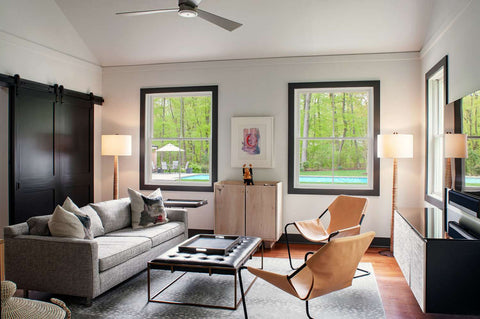
Clean, rectilinear lines and the introduction of warmer accents are perfectly offset by the greenery of the view. Photo credit Ward 5 Design


Left: A papered feature wall is a clever way adding subtle interest to an area. Scion’s Dragonfly Japandi wallpaper design is the perfect choice to brighten a neutral palette while keeping on theme. Photo Credit and detailed article – Moretti Interior Design
Right: Scatter cushions in Matrix blue colourway from the Robert Langford collection. The minimal pattern and rich tones make the ideal Japandi accessory.
Bauhaus:
Although the Bauhaus ‘school’ of design only existed for 14 years in the period between the two world wars, its influence has impacted modern design trends to this day. This is particularly evident in the industrial and minimal design ethic. Every aspect of Bauhaus design strove to meet technical, aesthetic, and practical requirements in every creative pursuit, and form follows function was the credo. This was the era when the crafts movement met technology, and the Bauhaus designer’s choice of materials was steel, leather, glass, and concrete. Materials that echoed the times.
This may all sound quite stark, but colour wasn’t ignored and the neutral palate of whites, beige and grey were often enhanced with pops of yellow, red and blue; primary colours that were so effectively used by Mondrian, who although not a member of the Bauhaus school, is often mentioned as such. Accessories were minimized to items that had a specific function. This simplicity and choice of materials have strongly influenced both the industrial and minimal interior design styles.
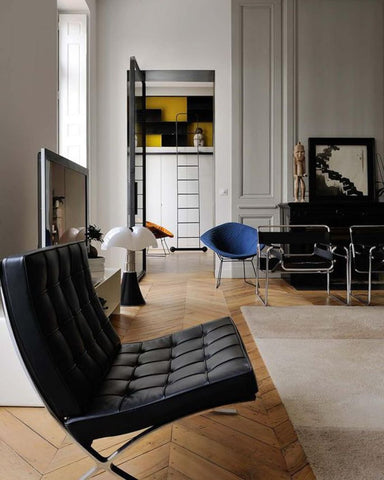
The Barcelona Chair by Ludwig Meis van der Rohe in the foreground with a pair of Wassily chairs by Marcel Breuer in the distance. Both are classics of the Bauhaus movement. Leather and tubular steel are hallmarks of the era’s style. Photo credit: Treaptyque
Our selection for the Bauhaus inspired interior is the Lafayette range of coffee and console tables. The simple design has a distinctly retro feel and is crafted in mild steel. The frames' capped ends cradle a 5mm toughened smoke-grey glass top. The Lafayette range is available in a range of coffee tables and consoles and has an option of an oak veneer top shelf.
Console dimensions: 1500mm (L) x 850mm (H) x 450mm (W)
Coffee table dimensions: 1500mm (L) x 450mm (H) x 450mm (W)
1200mm (L) x 450mm (H) x 600mm (W)
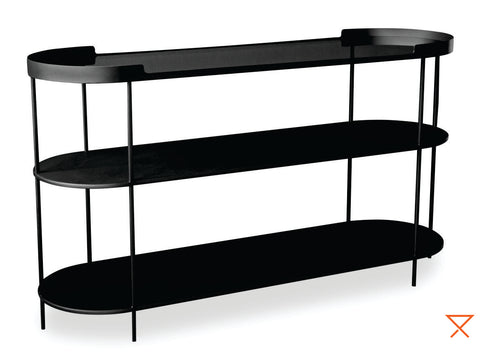
Above: The Lafayette Console
Below left: Detail of the Lafayette’s capped end design
Below right: The Bauhaus movement’s love of geometrics is reflected in the striking Ikat scatter cushion from the Robert Langford collection
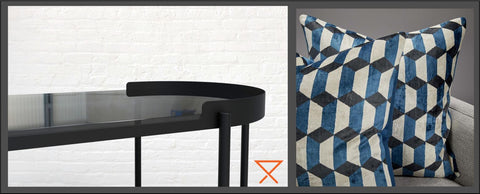
Gunta Stölzl was the head of the Bauhaus weaving workshop, followed by Anni Albers during the late 1920s. Both were instrumental in creating designs that complimented and abided by the Bauhaus ethos. Geometrics were favoured, and in recent years the fabric company Designtex secured the permission to produce a series comprising of eight upholstery textiles and eight digitally printed wall coverings modelled on these designs. The complete article is available here.
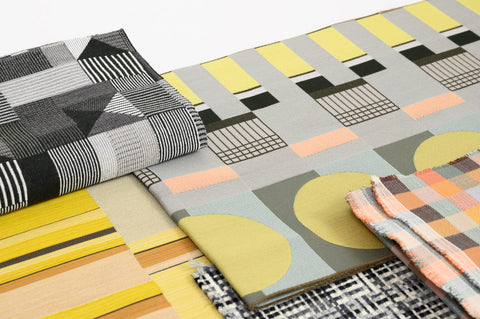
Designtex has released the Bauhaus Project, based on Gunta Stölzl’s original designs. Photo credit: www.dezeen.com
We do hope that you have enjoyed this peek into what can sometimes be a pretty confusing subject. Next month we’ll be taking a closer look at Boho Chic, Country Home style, and Traditional décor.
Remember, Leonardo Design are specialists in custom and bespoke pieces and ranges for the home or corporate setting. Speak with our team to discuss how we can bring our 30+ years of experience to your table.
Until next month
Yours in Style – Frank
_________________
























